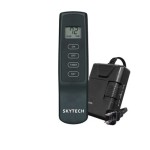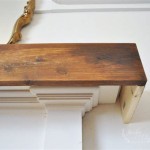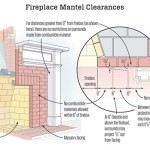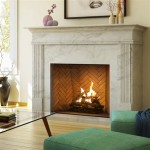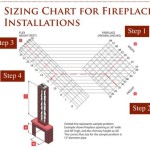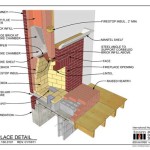Most Efficient Fireplaces: A Comprehensive Guide
The desire for warmth and ambiance during colder months often leads homeowners to consider fireplaces. However, traditional fireplaces, while aesthetically pleasing, are notoriously inefficient, losing a significant portion of heat up the chimney. This article explores the most efficient fireplace options available today, examining their features, functionality, and factors influencing their performance.
Understanding Fireplace Efficiency
Fireplace efficiency refers to the percentage of heat generated by burning fuel that is actually delivered into the living space. A highly efficient fireplace minimizes heat loss and maximizes the warmth available to the occupants. Traditional open fireplaces often have efficiencies as low as near 10%, meaning that 90% of the heat escapes up the chimney. This is due to several factors, including the large opening allowing for unrestricted airflow, the lack of insulation, and the natural draft that pulls warm air out of the room.
Several systems classify fireplace efficiency, including those established by the Environmental Protection Agency (EPA) for wood-burning appliances. These standards set limits on particulate matter emissions and require certain levels of efficiency to minimize environmental impact. It’s important to note that advertised efficiency ratings are often determined under controlled laboratory conditions and may not accurately reflect real-world performance. Factors such as the type of wood used, the installation quality, and the homeowner's operating practices can significantly influence the actual efficiency achieved.
Measuring fireplace efficiency is complex and involves analyzing the heat output compared to the fuel consumed. Baffling systems, insulation, and controlled airflow are key design elements that contribute to higher efficiency ratings.
Types of Efficient Fireplaces
Several types of fireplaces offer improved efficiency compared to traditional open hearths. These include wood-burning stoves, fireplace inserts, and gas fireplaces – each with its own strengths and considerations.
Wood-Burning Stoves: Wood-burning stoves are self-contained heating appliances designed for efficiency. They feature airtight construction, which allows for controlled airflow and combustion. This reduces heat loss up the chimney and promotes more complete burning of the wood, resulting in more heat and less smoke. Modern wood-burning stoves often incorporate catalytic combustors or secondary combustion systems to further reduce emissions and improve efficiency. These systems burn off the gases and particulate matter that would otherwise escape up the chimney, extracting additional heat and reducing creosote buildup. The efficiency of wood stoves can range from 60% to over 80%, depending on the model and design.
Fireplace Inserts: Fireplace inserts are designed to be installed directly into an existing masonry fireplace. They essentially transform an inefficient open fireplace into a more efficient heating appliance. Like wood-burning stoves, inserts feature airtight construction and controlled airflow, maximizing heat output and minimizing heat loss. Inserts are available in wood-burning, gas, and pellet-fueled models. Wood-burning inserts often include features similar to those found in wood stoves, such as catalytic combustors or secondary combustion systems. Gas inserts offer the convenience of instant on/off operation and adjustable heat output, while pellet inserts burn compressed wood pellets, providing a consistent and efficient heat source. The efficiency of fireplace inserts can range from 70% to over 80% for wood-burning models, and from 70% to 90% for gas and pellet models.
Gas Fireplaces: Gas fireplaces offer a convenient and efficient alternative to wood-burning appliances. They burn natural gas or propane and are available in a variety of styles, including direct-vent, vent-free, and B-vent models. Direct-vent gas fireplaces are the most efficient, as they draw combustion air from outside and vent exhaust gases directly outdoors through a sealed system. This prevents the fireplace from drawing air from inside the home, reducing drafts and heat loss. Vent-free gas fireplaces do not require a chimney or venting system, but they release combustion byproducts into the living space, requiring proper ventilation. B-vent gas fireplaces use an existing chimney for venting, but they are less efficient than direct-vent models. The efficiency of gas fireplaces typically ranges from 70% to over 85% for direct-vent models, and from 60% to 80% for vent-free and B-vent models. The efficiency of a gas fireplace can be dramatically altered by how well sealed the room is.
Factors Influencing Fireplace Efficiency
While the type of fireplace plays a significant role in efficiency, several other factors can influence its performance. These include proper installation, fuel selection, regular maintenance, and operating practices.
Installation: Proper installation is crucial for ensuring optimal fireplace efficiency and safety. A poorly installed fireplace can leak air, create drafting problems, and pose a fire hazard. It is essential to follow the manufacturer's instructions carefully and to hire a qualified professional for installation. For wood-burning fireplaces and inserts, proper flue sizing and chimney maintenance are critical for preventing creosote buildup and ensuring proper venting. For gas fireplaces, proper gas line connections and venting are essential for preventing gas leaks and carbon monoxide poisoning.
Fuel Selection: The type of fuel used in a fireplace can significantly impact its efficiency and emissions. For wood-burning fireplaces, using seasoned (dry) hardwood is essential for achieving optimal combustion and minimizing smoke. Green or wet wood contains excess moisture, which reduces the heat output and increases creosote buildup. For gas fireplaces, using the correct type of gas (natural gas or propane) is crucial for proper operation and efficiency. Ensure that the fireplace is properly configured for the type of gas being used.
Maintenance: Regular maintenance is essential for keeping a fireplace operating efficiently and safely. For wood-burning fireplaces, cleaning the chimney regularly to remove creosote buildup is critical for preventing chimney fires. Inspecting and cleaning the firebox and venting system can also improve efficiency and performance. For gas fireplaces, cleaning the burner and pilot light can ensure proper ignition and combustion. Inspecting the venting system for leaks or obstructions is also essential. Regular inspections by a qualified professional can identify potential problems and ensure that the fireplace is operating safely and efficiently.
Operating Practices: How a fireplace is operated can also influence its efficiency. For wood-burning fireplaces, building a proper fire with adequate airflow is essential for achieving optimal combustion. Avoid overloading the firebox with excessive amounts of wood, as this can reduce efficiency and increase smoke. For gas fireplaces, setting the thermostat to a comfortable temperature can help conserve energy. Avoid leaving the fireplace on when it is not needed, as this can waste fuel and increase heating costs. Operating habits can greatly impact both the short-term and long-term efficiency of a fireplace.
Ultimately, selecting the most efficient fireplace involves considering individual needs, preferences, and budget. By understanding the different types of efficient fireplaces and the factors influencing their performance, homeowners can make informed decisions that prioritize warmth, comfort, and energy savings.

What S The Most Efficient Fireplace In Fort Collins Co

What S The Most Efficient Fireplace In Fort Collins Co

The Best Wood Burning Fireplace Inserts Or Stoves Ecohome

What Is The Most Efficient Type Of Fireplace For A Home Vanderwall

What Is The Most Efficient Fireplace Master Fireplaces

Safest Wood Stove The Catalyst Burning By Mf Fire
:max_bytes(150000):strip_icc()/__opt__aboutcom__coeus__resources__content_migration__treehugger__images__2014__11__stuv-0c2e2626361d4a42a48ceaed4e86955b-77cab6470b3c4c56b4a9973f230178f4.jpg?strip=all)
Which Fireplace Is Best For The Environment Wood Gas Electric Pellet Or
:max_bytes(150000):strip_icc()/__opt__aboutcom__coeus__resources__content_migration__treehugger__images__2012__01__rumford-details-0c80e2d578fd400c8340d7c652246a68.jpg?strip=all)
Ids12 The Return Of Rumford Fireplace As An Efficient Prefab

What Type Of Stove Is The Most Efficient Free Standing Service

What Are The Most Efficient Stoves To Buy Direct


